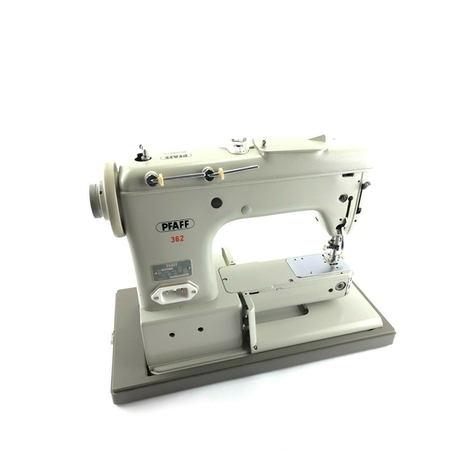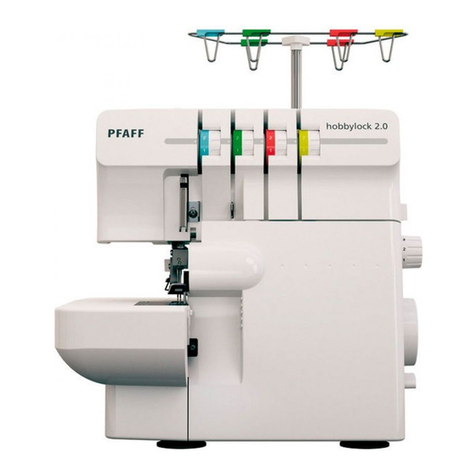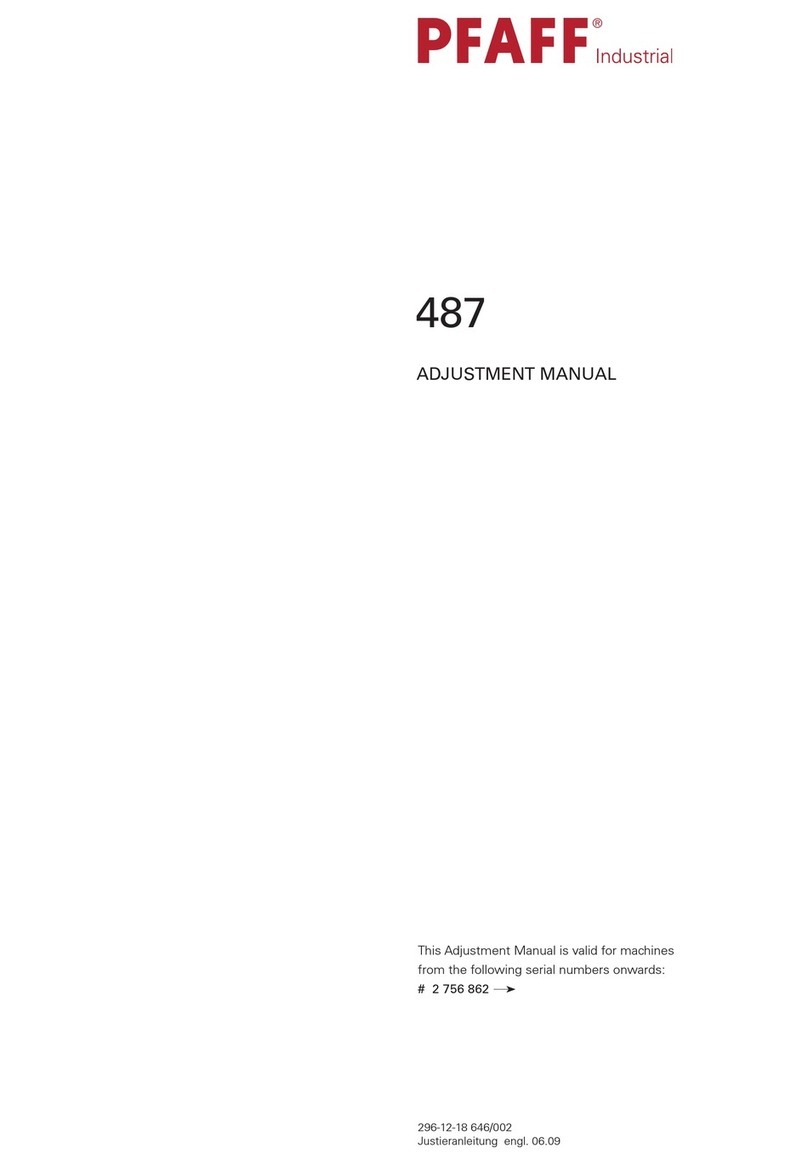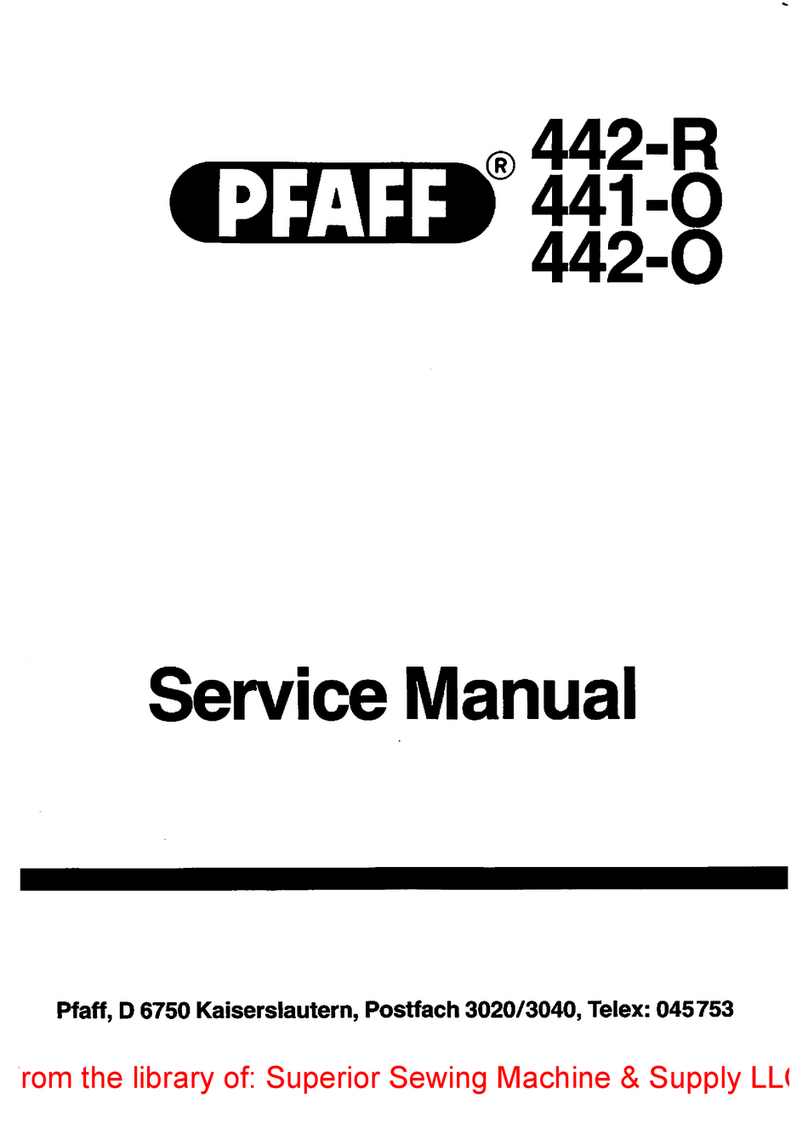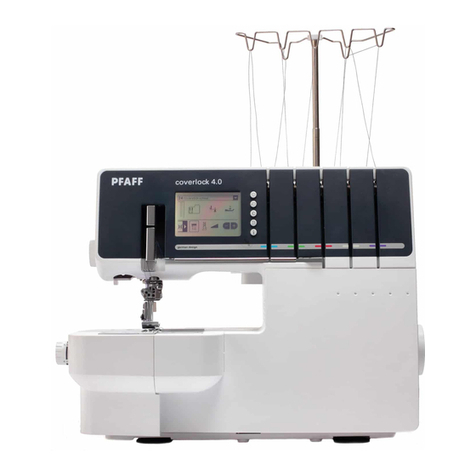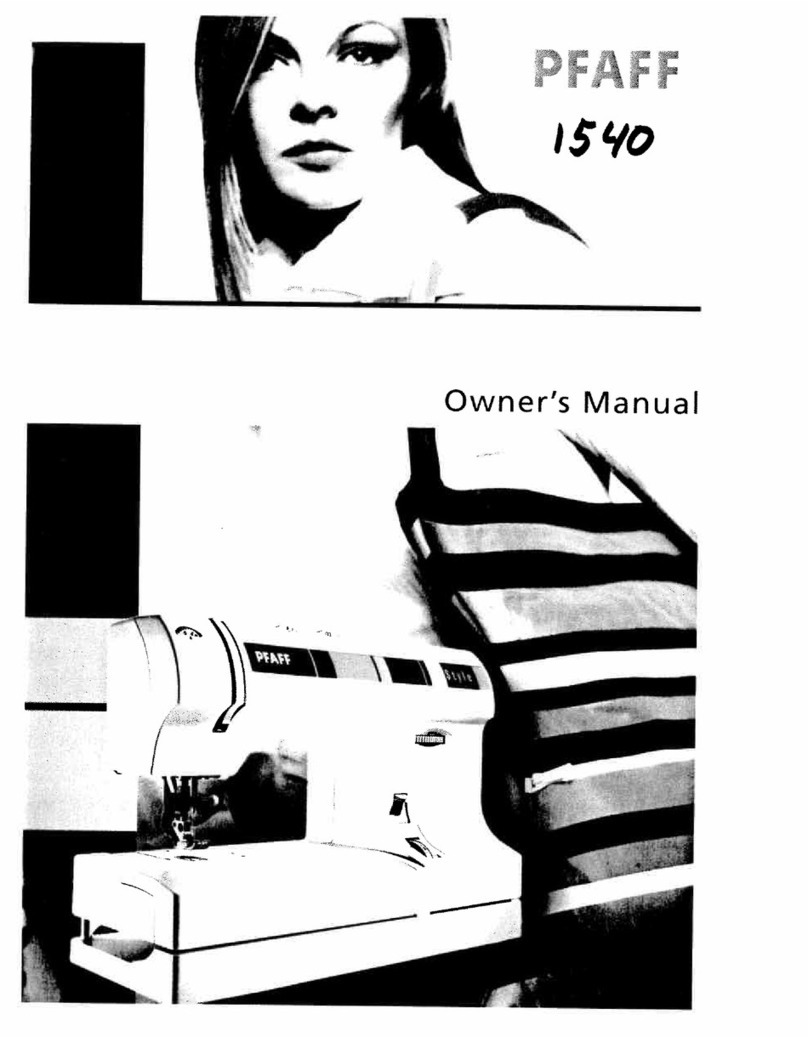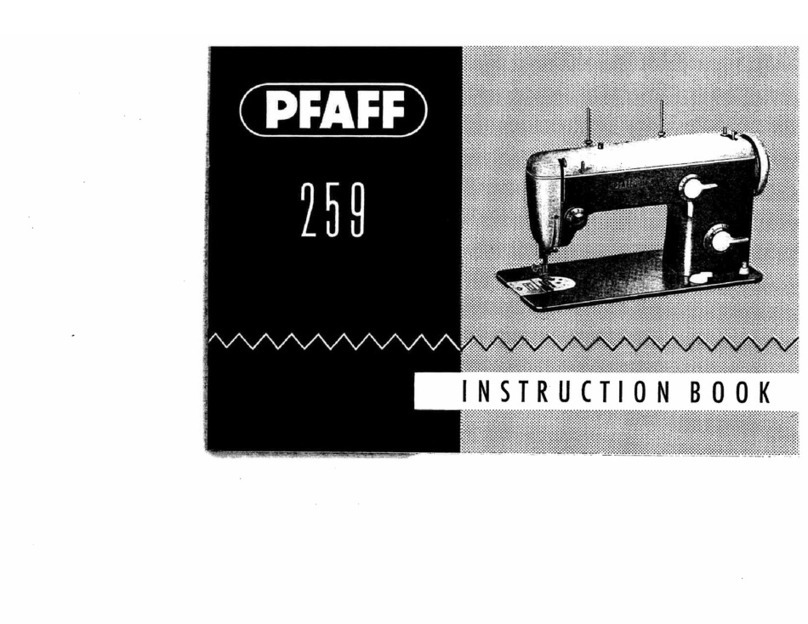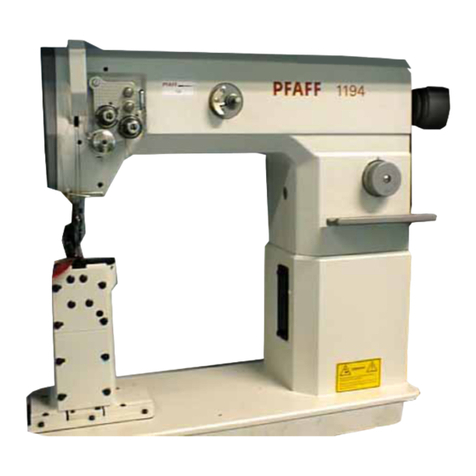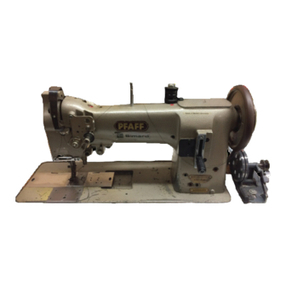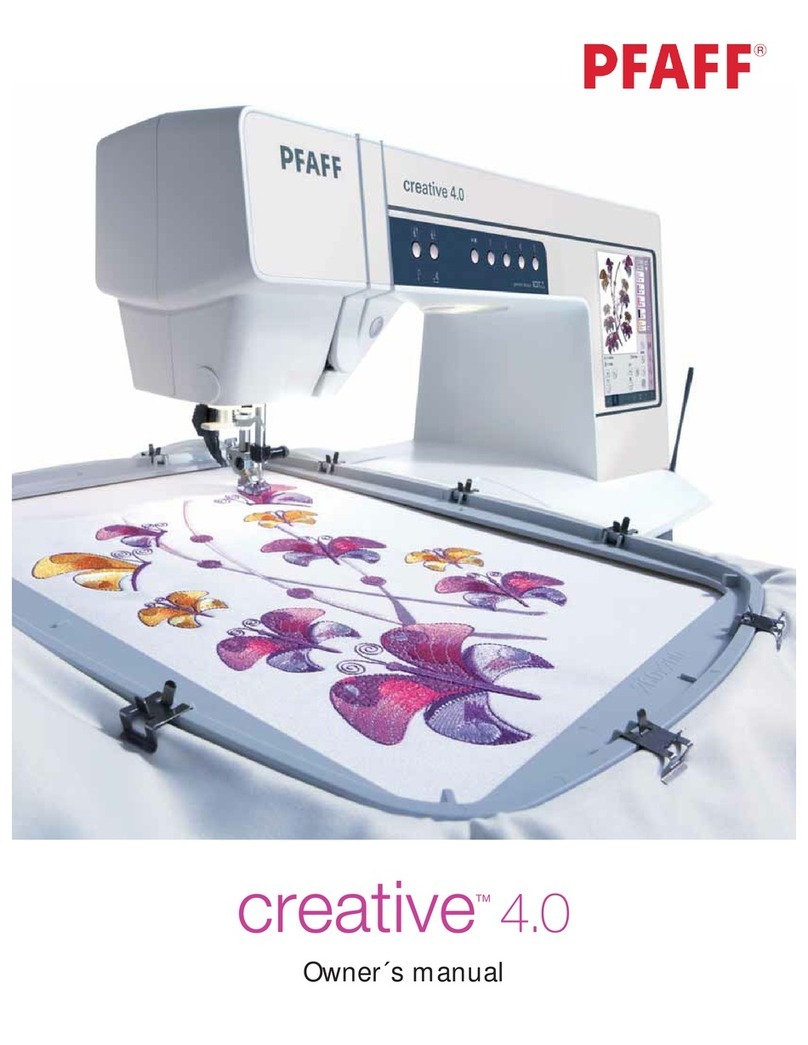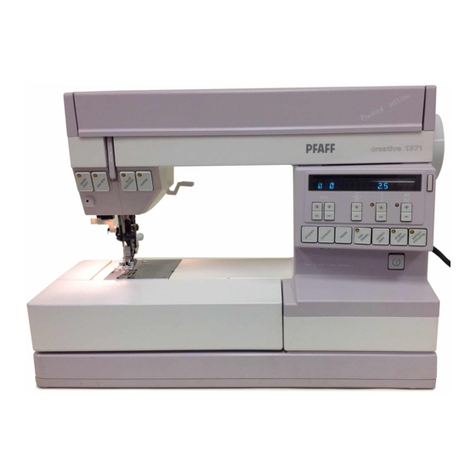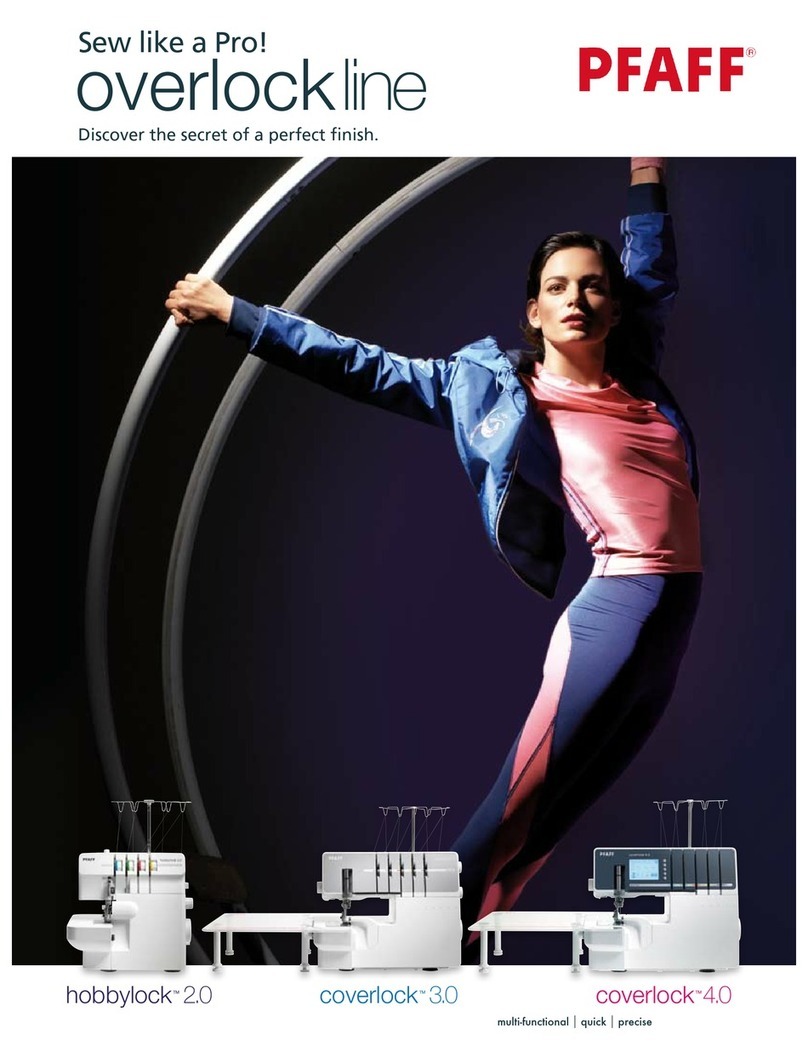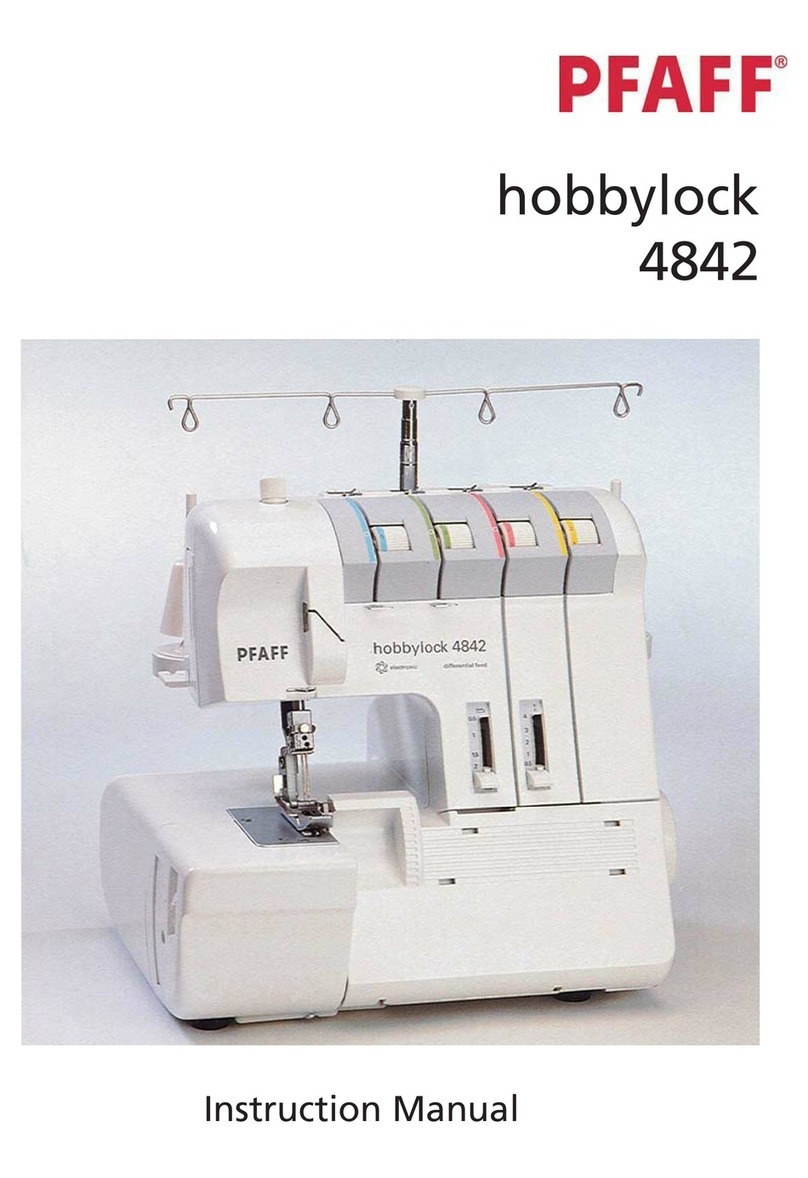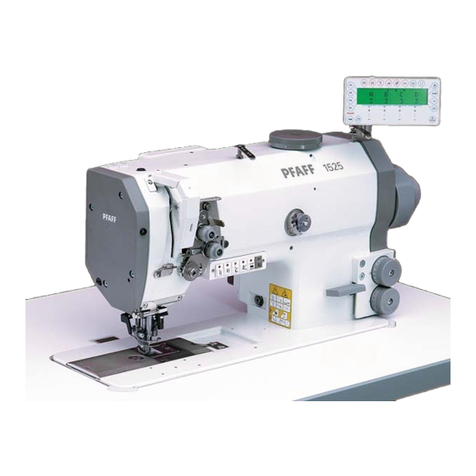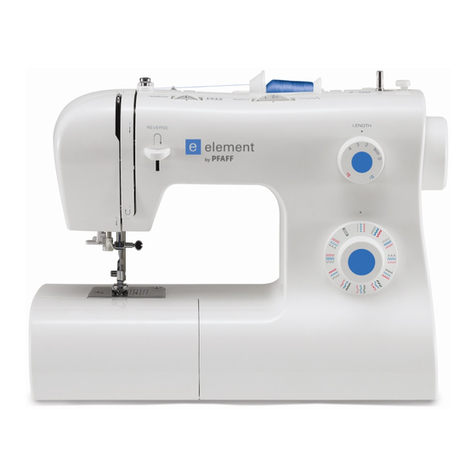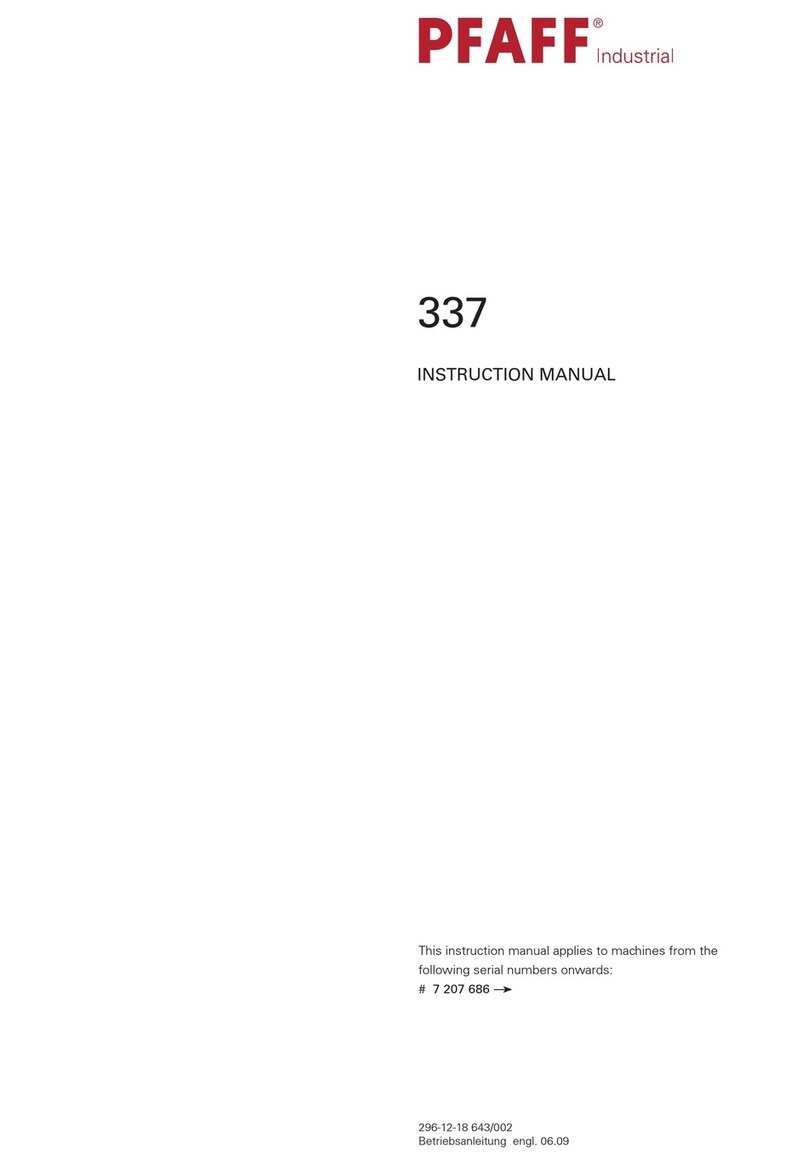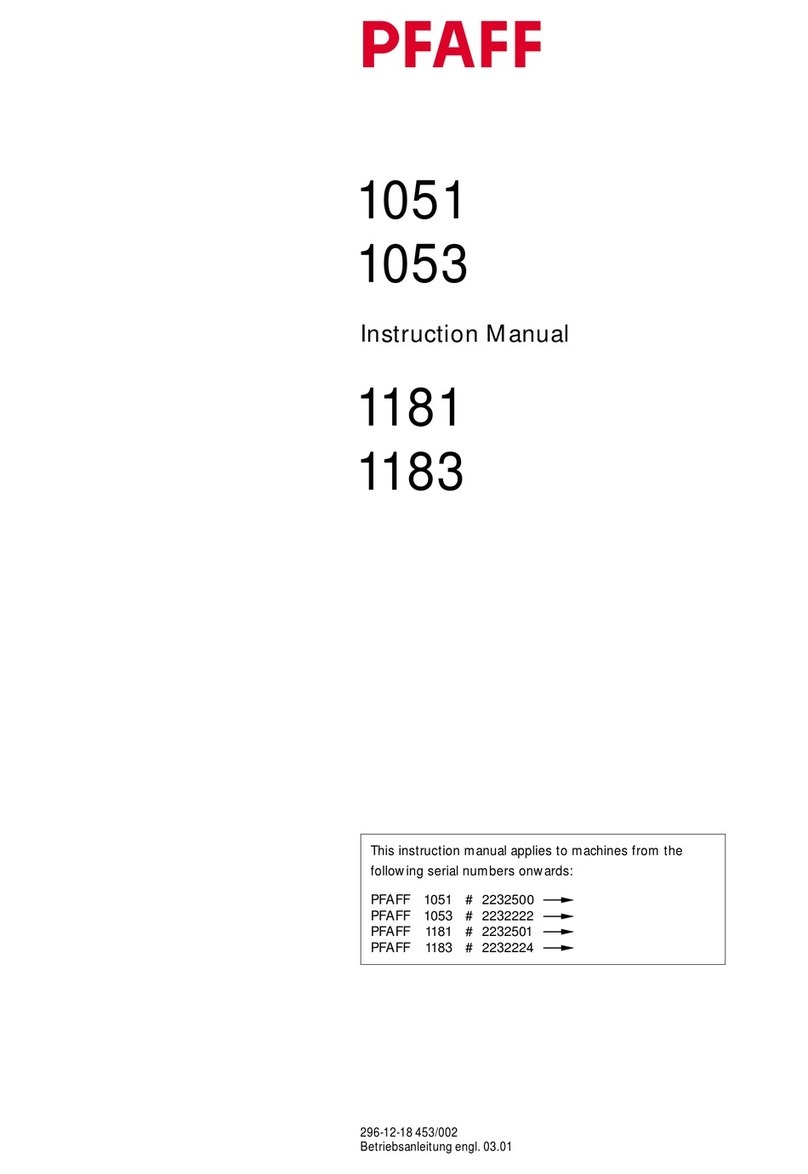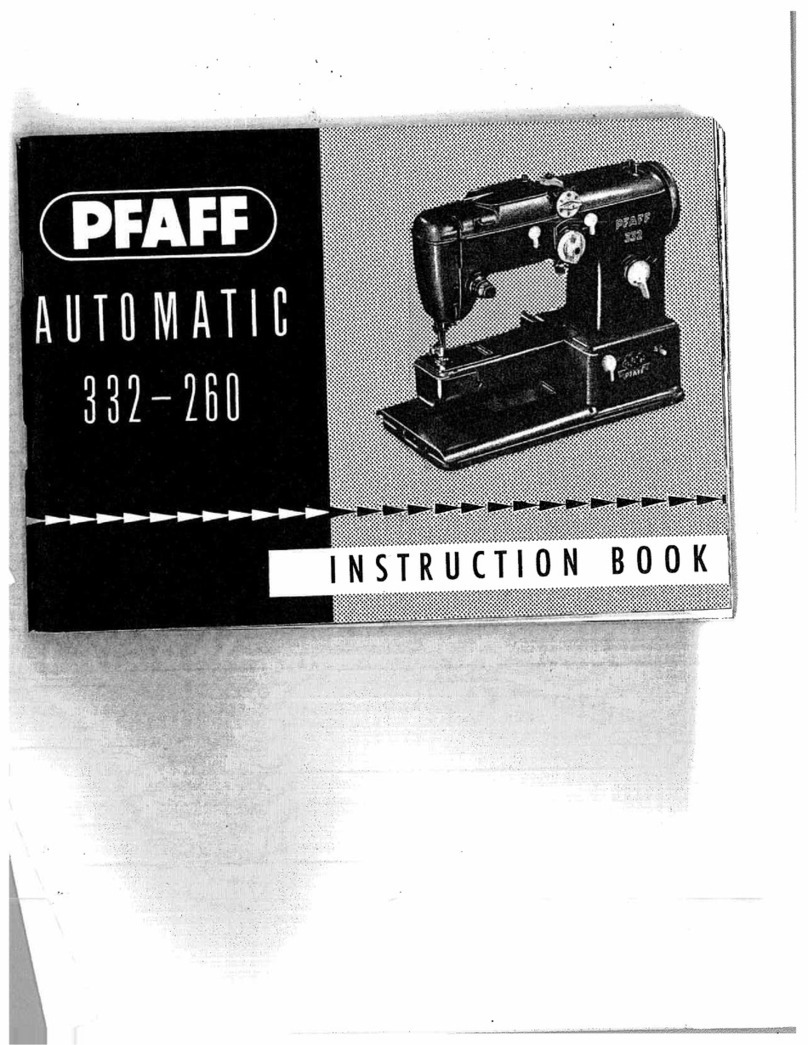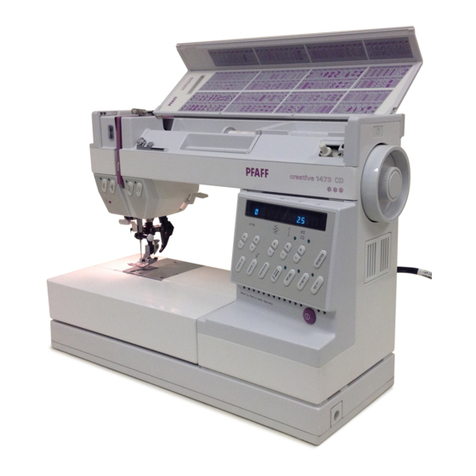
Notes
on
safety
Notes on safety
for
household sewing
machi-
nes in accordance
with
EN
60
335
-2-
28
and
IEC
60
335
-
2-28
1. The user
must
exercise adequate caution
with
regard
to
the
up
and
down
move-
ment
of
the
needle
and must constantly
observe the sewing area while sewing.
2.
When
leaving
the
machine
unattended.
during
maintenance
work
or
when
replacing
mechanical
parts
or
accesso-
ries.
always
disconnect
the
machine
from
the
mains
by
pulling
out
the
mains
plug.
3. The maximum permissible wattage
for
the
sewing lamp is
15
watts.
4. The tension
of
the drive belt
must
only
be
adjusted
by
a
PFAFF
mechanic.
5. The machine must be operated
in
accor-
dance
with
the
indications
on
the
spe-
cification
plate.
6. Do not insert any objects into openings on
the
machine.
7. Do not use
the
sewing machine if:
-there
is
visible damage
-its function is disturbed
-
it
is
wet. e.g.
with
condensation
which
can
occur
when
a
cold
machine
is
brought
into
a
warm
room
.
8. Do not pull
the
mains plug
out
of
the soc-
ket by its cord.
9.
If
this appliance
is
used
for
another pur-
pose than
that
for
which
it
is
intended
or
if
it
is
wrongly
operated. we cannot accept
any liability
for
any damage caused.
10
. To avoid the risk
of
electric shock.
do
not
open the machine. There are no parts
inside
the
machine which the user can
repair. Repairs are solely
the
responsibility
of
our qualified service staff.
11
.
Be
sure
to
use only original
PFAFF
parts.
12
.
The
machine
is
designed
for
a
mains
supply
with
a
nominal
voltage
of
+/-
10%
and
a
rated
frequency
of
+/-
4%.
2
13.
When used properly.
the
temperature
of
the outer components
of
a non-electroni-
cally controlled
foot
control can reach up
to
85
°
C.
Constant use at a
low
speed is
therefore not permitted in order
to
avoid
damage.
Environment
The recommended environment is:
Ambient
temperature 10°C
to
40°C
Humidity
20%
to
80%
Storage temperature: -
25°C
to
+
60°C
The machine is suppressed and
immune
to
interference; however. it should not be opera-
ted near electronic devices such
as
radios.
TVs,
PCs,
broadcasting
transmitters
etc.
This sewing machine is a
high-quality
electro-
nic-mechanical device. It is a machine
for
supervised use in
the
home. It should not be
subjected
to:
dust. dampness,
direct
sunlight,
static electricity, heat-radiating objects,
corro-
sive chemicals
or
liquids.
For ventilation purposes
the
machine
must
only be operated on
an
open surface which is
both
firm
and horizontal.
Care
of
the
machine
Always
protect
the
machine
from
damage
which
may be caused by
it
being
hit
or
drop-
ped.
Cleaning
Housing and display:
To clean
the
housing, use only a clean, dry,
soft, lint-free cloth. To remove any stubborn
dirt
use a
soft
cloth
with
alcohol.
Please
note!
Do not use any insecticides
or
chemical pro-
ducts
such as petrol
or
liquid chemicals
to
clean
the
housing.
